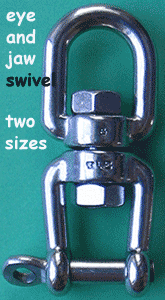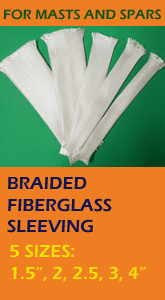|
It is now more than five years since the first boat was built to my Phoenix III design. The concept came about because of a decision I had come to about the optimum size for a solo or two-up coastal cruising dinghy. For much of my life I had been sailing a 15ft 2in x 5ft 11in (4.6m x 1.8m) cruising dinghy which had been designed and built by my father. Produced at the beginning of the seventies, she encompassed the building philosophy of the times. Her hull had a narrow flat bottom panel, and the topsides were made of four wide marine plywood planks per side, laid up over longitudinal battens of Western Red Cedar. Anybody who is familiar with the Hartley range of trailer-sailer designs would find her appearance to be familiar. She was named Phoenix and she is still in use to this day.
 |
The original Phoenix, a long time ago. |
Phoenix has had an eventful life, and in the process she has endeared herself to a large number of people. In my late teens and through my twenties, I spent a lot of my leisure time aboard this boat, and was able to pick up much beach-cruising experience along the way. Some trips covered a hundred kilometres over three or four days, while others were just day trips such as circumnavigating Magnetic Island off Townsville, or exploring the eastern side of Hinchinbrook Island. However, the place where Phoenix feels most at home is at the southern end of Moreton Bay, close to where she was built in 1971. Originally, Phoenix was rigged as a sloop (or knockabout) with a stayed mast set in a step on the foredeck. She carried 103sq. ft of sail in the form of a Bermudan mainsail and a staysail hanked to the forestay. With this rig she was a delightful and forgiving boat to sail, but I was becoming increasingly interested in more traditional rigs, and in particular I was fascinated by the Chinese Lugsail, otherwise known as the Chinese Junk rig. At the age of thirty, I took my first tentative steps in the field of design. Probably overcomplicating the process, but thinking that I was walking on sacred ground, I did endless drawings and calculations before making a free-standing mast, and cutting a hole in the foredeck and kingplank to accommodate the new mast. As it turned out, the new Chinese Junk rig worked superbly well, and was the primary rig on the old boat for many years and on many good trips (see the photo at the beginning of this article).
 |
The original Phoenix showing her Chinese Junk rig. |
The main difference between the Chinese rig and any other fore-and-aft rig is that the sail is controlled by a series of "sheetlets" running up to points on the leech of the sail, rather than having the main sheet run just to the boom. In fact, the Chinese boom is little more than another batten. Because the sail is controlled by an array of small "sheetlets", there is little need for sophisticated sail cloth and exotic fittings. Tensions in the rig are all very low in comparison with those in a Western rig, and Chinese sails can work effectively even when full of holes and made of inferior materials such as bamboo matting and hessian. It makes you wonder who really is the most clever after all... Since that initial rig change, Phoenix has carried many other different types and configurations of sail, and in the process I have learnt a lot about the advantages and pitfalls with tradition rigs. The experimentation continues with the old boat, and at this very time I am making a new hollow mast to support her next rig. After all, she is only forty years old! Below is a drawing of the new rig, which is once again set on a free-standing mast, but this time with a gaff-headed mainsail and a very small jib set flying. The jib has to be small so as to stand properly without the use of shrouds or backstays to provide luff tension, but the benefit of even a small jib such as this is out of all proportion to its sail area. Think of it a as "leading edge device" such as a slat on the wing of an aircraft.
 |
The next rig for the original Phoenix. |
Although Phoenix has been such a wonderful boat for our family and friends, she has some shortcomings as a solo beach-cruiser, with the main one being that she is just a bit too big to be easy to handle on and off a beach when one is operating alone. Also, being as wide as she is, rowing her is not much of a pleasure and one is forced to carry an outboard motor for auxilliary propulsion. With this in mind, I started to search for plans for a more easily handled beach-cruiser. Over a number of years I studied various designs, and read the works of experts in the field of beach-cruiser design. For personal reasons, I settled on a length of about 15 to 15-1/2 feet and a beam of 4-1/2 to 5 feet. With a growing interest in the design process driving me, I sketched various options and eventually carved a wooden half-model and made a device which allowed me to take a set of lines off the model.
 |
The wooden half-model I made after having drawn the lines of this boat. |
I found myself too busy building boats for other people, and the idea sat on the back-burner for a couple of years. However, on one particularly busy day in the workshop I was visited by a chap called Paul Hernes who wanted to build a boat in exactly the size range I had in mind. While I was dealing with a 'phone call, my able helper, Doug Laver, told Paul to abandon the idea of buying the plans he had in mind, and to get me to design a boat for him. At this particular time I was exceptionally busy and the very last thing I needed was another job, but Doug had promised on my behalf, and so it had to be done. Doug had an ulterior motive, in that he wanted me to continue with my designing but he also knew that I needed a push. The boat which resulted from this design exercise drew inspiration from my half-model, but needed to be modified in shape somewhat in order to make use of the wide plywood planks I had in mind. In honour of my father's boat, I called the new design Phoenix III (Phoenix II was the half-model, which was never built full-size).
 |
The very first Phoenix III five minutes after her first launching. |
The peak sprit needs to be tightened a bit, but she went really well The plans for Phoenix III were the very first set I ever drew using CAD, and the learning curve for me was very steep. When I look back on the plans as originally drawn, I feel a little embarrassed by the inelegant drafting, and there were a few fairing errors in the early sets. However, those have been ironed out by now, and even so, a lot of boats have been successfully built - some by complete novice builders. In part, this is because I include a 50-plus page illustrated instruction manual with the 30 sheets of A3 drawings in the plan set.
 |
Dan Taylor's Phoenix III sailing on the west coast of the USA |
A friend of mine was very impressed with the layout, size, seaworthiness and speed of Phoenix III but he lacked confidence in his ability to build a glued-lapstrake (clinker) hull, so for him I drew a set of plans for a boat which had the same layout, centreboard, rudder and rig as Phoenix III but built as a 'stitch-and-glue' hull. This required me to alter the shape of the boat because of the large panels of plywood used on the construction - but the stability, performance, and general characteristics are nearly identical. This design was named First Mate.
 |
First Mate with the Sprit-Sloop Rig |
 |
First Mate |
 |
First Mate |
One of the problems in life is that everybody wants a different boat. Therefore I've been asked to draw a lot of designs over the last five years, and the workload generated has slowed down my building projects enormously. I don't think people understand just how long it takes to produce a fully dimensioned set of plans, especially if they are accompanied by an instruction manual. Some of the significant designs I have on my books are shown in the images throughout this article.
 |
Periwinkle - designed and built for John Shrapnel |
 |
Gaff-headed Cat Rig with Flying Jib on Periwinkle |
 |
Graham Faulkner's Periwinkle showing her Cat Rig |
 |
Water Rat, a joint effort between Doug Laver and me, built by Al Burke |
 |
My 26ft powerboat design, Three Brothers |
 |
Alby, a useful little tender designed for Al Burke |
 |
Al Burke rowing the Alby he built |
 |
Flint, a light-weight design for oars and auxilliary sail |
 |
Flint, slipping along under oars |
 |
Little Egret, a 19ft beach-cruiser |
 |
Interpretation of 1910 Swedish Pilot Boat, Skum |
I feel privilaged to have been able to involve myself in this sort of work as a way of life. But time and again, I suggest to people that instead of having a boat built for them by a professional, have a go at it yourself. Even better, do some thorough research and turn your hand to designing the boat as well. It should be obvious that anybody taking on the building, and possibly the designing of a boat has a responsibility to educate themselves enough to produce something which is strong and safe in use. But there is plenty of good information available in print, and many people who are willing to help (but be careful who you choose). One of the very highest quality text books available is "The Gougeon Brothers on Boat Construction" written and published by the people who make WEST System® Brand Products. You can obtain copies through ATL Composites, the manufacturers of WEST System epoxy in Australia.
 |
Phoenix III - Photo by Paul Hernes |
Well, it is pretty difficult for me to pin down when my obsession with boats started, but I do know that finally taking the leap of faith required to publish a complete design started with Phoenix III. I've learnt a lot about drafting and presentation in the years that have followed, but the boats which have been completed to the first edition of the plans have turned out to be very satisfactory in use, and I am quite proud of results.
Ross' plans are available in the Duckworks store.
www.baysidewoodenboats.com.au
rosslillistonewoodenboat.blogspot.com.au
|





























